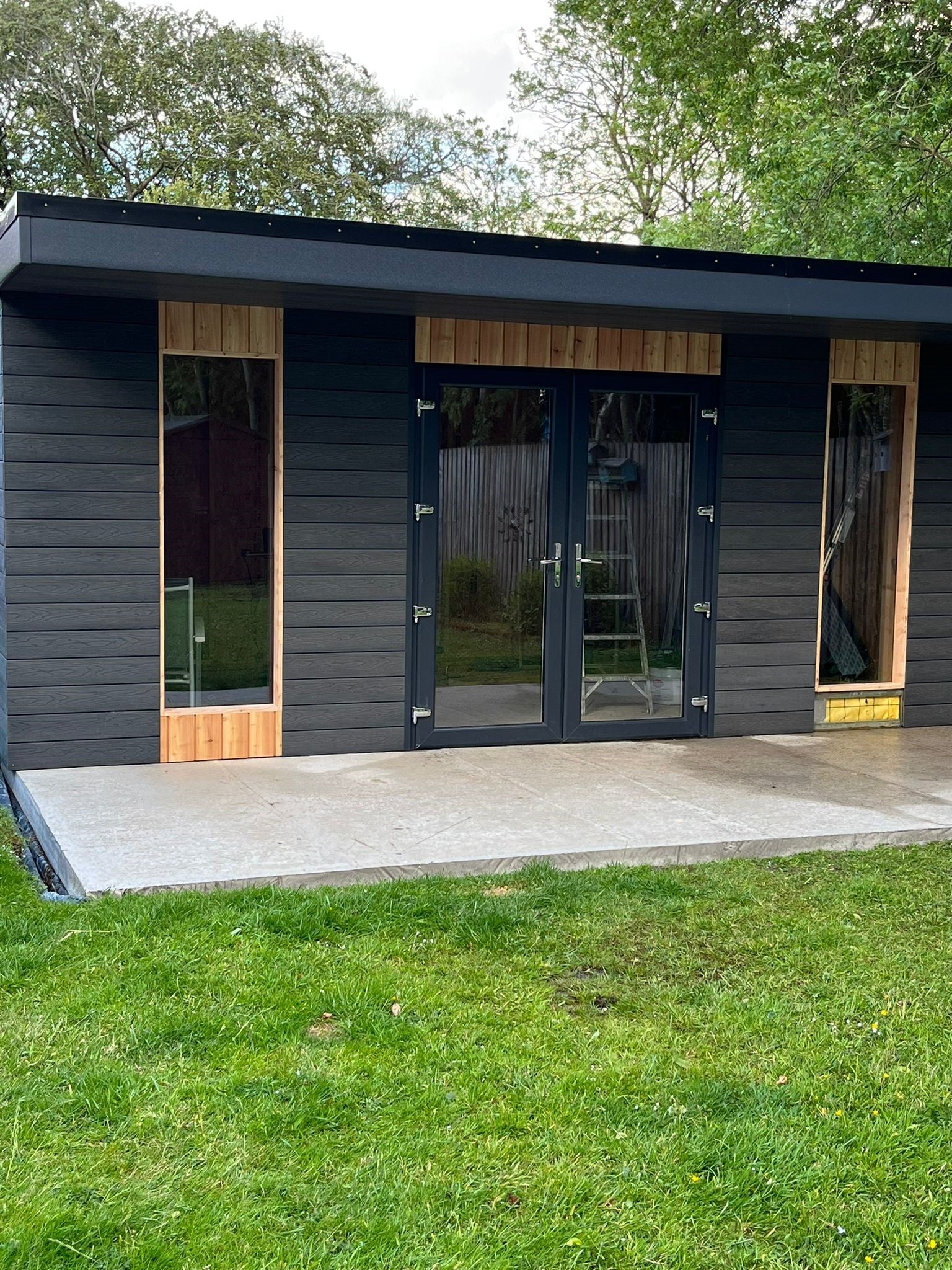When considering materials for cladding your home, the longevity of the material is a crucial factor.
Composite cladding, known for its durability and minimal maintenance, has emerged as a leading choice among homeowners and builders.
This blog explores how long composite cladding lasts, what contributes to its longevity, and how it compares to other cladding materials, such as fibre cement cladding.

A recent composite cladding installation, supplied by Trade Warehouse
What Is Composite Cladding Made From?
Composite cladding is crafted from Wood Plastic Composite (WPC), a blend that combines the aesthetic appeal of wood with the resilience of plastic.
The materials used in composite cladding are critical to its durability and long lifespan.
Comparing Composite Cladding to Other Materials
The lifespan of composite cladding is often compared to other materials such as timber and uPVC. Understanding these comparisons helps in making an informed decision.
Timber Cladding
- Softwood: Typically lasts 7-15 years with proper maintenance.
-
Hardwood: Can last up to 25 years but requires regular upkeep.
uPVC Cladding
-
Durability: Can last over 50 years but is prone to fading and may not maintain its aesthetic appeal as well as composite cladding.
🔑 Key Takeaway: Composite cladding outlasts many traditional materials, offering up to 50 years of service with minimal maintenance.
Why Composite Cladding Lasts Longer Than Wood Cladding
The durability of composite cladding over traditional wood cladding is primarily due to its composition and resistance to common issues that affect wood.
Role of Recycled Plastic
- Element Resistance: Prevents the components from rotting, fading, or being damaged by insects.
- Structural Integrity: Maintains shape without warping, splintering, or sagging over time.
Advantages of Capped Composite Cladding
- Extra Protection: The additional polymer layer shields against scratches, stains, and environmental damage.
- Longer Lifespan: Provides superior durability compared to uncapped composite cladding.
🔑 Key Takeaway: The incorporation of recycled plastic and the option of capped boards make composite cladding more durable and longer-lasting than wood.
Composition of Wood Plastic Composite (WPC)
- Recycled Wood Fibers: Provides a natural wood-like appearance while maintaining structural integrity.
- Recycled Plastics: Enhances durability, making the cladding resistant to weather, insects, and decay.
- Colourants: Ensures consistent and lasting colour with added UV protection.
- Bonding Agents: Holds the materials together, creating a robust and stable board.
Additionally, composite cladding can come in two forms:
- Uncapped Composite Cladding: Standard durability with resistance to common issues like rot and insect damage.
- Capped Composite Cladding: Features an extra polymer layer that provides superior protection against scratching, staining, and the elements, further extending its lifespan.
🔑 Key Takeaway: The unique composition of composite cladding, especially capped versions, significantly contributes to its long-lasting nature.
Benefits of Composite Cladding
Composite cladding offers numerous benefits that contribute to its longevity. These benefits make it a practical and economical choice for home exteriors.
Enhanced Durability- Resistance to Weather: Composite cladding withstands harsh weather conditions better than traditional wood.
- UV Protection: Maintains colour and structural integrity even with prolonged sun exposure.
-
Insect and Rot Resistance: Unlike wood, composite cladding is impervious to termites and other wood-eating insects.
Low Maintenance
- Minimal Upkeep: Requires only occasional cleaning, unlike wood that needs regular painting, staining, or sealing.
- Easy Cleaning: Can be cleaned with a pressure washer or soapy water and a brush.

Woodgrain composite cladding boards in use for an outbuilding in the UK.
Environmental Benefits
- Sustainable Materials: Made from recycled wood and plastic, reducing the environmental impact. Using recycled wood fibers means that less virgin timber is harvested, which helps preserve forests and reduce deforestation. By repurposing wood that might otherwise end up in landfills, composite cladding contributes to a more sustainable use of natural resources.
-
Lower Carbon Footprint: The production of composite cladding typically has a lower carbon footprint compared to traditional wood cladding. The energy used to recycle materials and produce composite boards is often less than the energy required to harvest, transport, and process new timber.
Frequently Asked Questions (FAQs)
Does Composite Cladding Fade?
Composite cladding boards may fade slightly after installation as natural wood oils wash out. However, this is minimal, and high-quality options like our plain or woodgrain cladding are UV stable.
Will I Need Planning Permission to Install Composite Cladding?
Generally, you do not need planning permission to install composite cladding on your home. However, exceptions exist if you live in an estate or conservation area.
Where Can I Purchase Composite Cladding?
Trade Warehouse offers a wide range of composite cladding with a 25-year warranty and various natural colours. They provide high-quality composites with excellent design and durability.
Final Thoughts
Composite cladding stands out as a long-lasting, low-maintenance, and environmentally friendly option for home exteriors.
By choosing composite cladding, you invest in a material that not only enhances your home’s appearance but also withstands the test of time with minimal upkeep.

